Evelyn (“Ev”) E. Dense: A Guide To Crime Scene Investigation
Officer Willie Findem was hot on the trail of two armed robbers, running as fast as his flat feet could carry him, when he heard a woman screaming for help as he raced past a row of shotgun houses in a section of town the locals call Murder Alley.
Despite the fact that his heart thumped against the inside of his chest (felt like his sternum was on the receiving end of a fast flurry of jabs and right hooks delivered by top heavyweight boxer), and that his lungs sucked at the atmosphere like a kid going after the last drop at the bottom of a fast-food milkshake cup, he turned and ran up a set of wooden steps, taking them two at a time, responding to “who knows what’s behind the front door of house number 1313.” This, a house whose tattered shingles and paintless wood siding were well past their expiration dates, was the source of the yelping and squalling and screeching.
A quick twist of a slightly-dented steel doorknob, worn slick after many years and many turns by greasy, dirty hands, revealed a visibly shaken Ms. Patty Cakes, a petite blonde wearing a black bathrobe and a fresh coat of gleaming fire-engine-red polish on the nails of each of her ten stubby toes.
“Hurry, over here!” she said, pointing to an open doorway with one hand, clutching the robe tightly to her chest with the other. “It’s in the basement.”
Well, the officer’s mama didn’t raise no fool. “Ma’am, what’s in the basement?” he asked before taking a single step toward the entrance to the bowels of the home.
“The body! The dead body! That’s what’s in the basement! I heard a loud crash, and … I don’t know … I looked … and … he’s dead. And there’s blood, and a knife … and please, hurry! Come on, I’ll show you, but you’ll need a flashlight. The batteries in mine are as dead as he is. Maybe even deader.”
Officer Findem clicked on his light, placed a hand on the butt of his gun, stepped in front of the nervous woman who detected a pleasant hint of Old Spice as he passed, and headed down the creaky, wood plank steps.
“See, it’s there. Right there … by the furnace. I told you, it’s a dead body!”
An hour later, Evelyn E. Dense (“Ev” for short), and her crackerjack team of crime scene techs were hard at work collecting and packaging blood samples, the murder weapon, and hairs and fibers. “Ev” E. Dense is good at what she does. The best in the business, actually.
Findem was confident that with Ev Dense’s assistance he’d soon have his man, or woman.
The Process
Finding clues (evidence) is important, sure, but the manner in which those items are packaged can sometimes make, or break, a case. Common sense tells us to not pour the contents of a half-full wine glass into a cardboard box, right? So what are the proper containers for the many kinds of evidence encountered by crime scene techs and detectives?
Well, for starters, here’s “Ev” E. Dense’s handy guide to collecting and packaging items found at crime scenes.
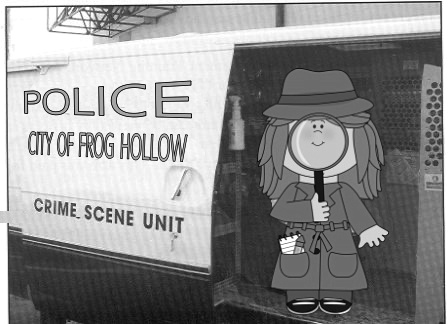
CSI Supervisor “Ev” E. Dense – Frog Hollow PD
Powders – clear plastic bags, paper (druggist folds), envelopes. Always separate by suspect, meaning don’t lump all things found at a scene in one package (powder found in Suspect A’s bedroom is packaged separately from the powder found in Suspect B’s bedroom).
Pills and tablets – clear plastic bags
Vegetation (weeds and other plant material retrieved from outdoor crime scene) – air dry and seal in paper container.
Plants – seal in paper container (bags, etc.) Never use plastic.
Needles and other sharps – always seal inside safety tubes with appropriate bio-hazard warning labels attached.
Urine – clean, leak-proof containers. Urine should be refrigerated, and may also be frozen.
Blood (liquid form)- vials containing appropriate anticoagulant. Refrigerate.
Blood-stains (dry) – collect sample using sterile swabs moistened with distilled water. Air dry and package (paper).
Blood-stained clothing – air-dry entire article, package in paper.
Wet evidence drying lockers
Blood-stained objects (guns, carpet, knives, furniture, etc) – deliver the entire object to the lab, if possible. For carpeting, isolate and remove stained area for transport and testing.
Seminal (semen) stains (dry) – collect sample using sterile swabs moistened with distilled water. Air dry and package (paper). For wet stains, collect using sterile swab and then air dry and package (paper). If needed, use alternate light source to detect seminal stains. For large items (mattresses, etc.), collect the entire piece and deliver to lab for testing.
Condoms – collect liquid using cotton swabs. Air dry both the swabs and entire condom. Package in paper.
Saliva – (dry) – collect sample using sterile swabs moistened with distilled water. Air dry and package (paper). For wet stains, collect using sterile swab and then air dry and package (paper). If needed, use alternate light source to detect seminal stains. For large items (mattresses, etc.), collect the entire piece and deliver to lab for testing. Cigarette butts, masks, chewing gum, etc., air dry and package in paper.
Fingernail area – swab between the nail and fingertip using sterile swab moistened with distilled water. Use separate swab for each hand. Package in paper and label appropriately (right hand and left).
Hairs and fibers – small boxes or paper (druggist fold). Do not bend hair. Do not mix samples.
Rope – preserve and protect cut ends for possible sharps identification. Plastic or paper container.
Ammunition (discharged) – package each piece separately (paper, such as envelopes, etc.).
Weapons – make each weapon safe, if possible (no ammunition, magazine removed, etc.). Package in cardboard box appropriately labeled “FIREARM,” etc.
*Plastic containers, such as Ziploc bags, can act as a mini-incubator, encouraging bacteria growth. Bacteria can decompose and/or destroy DNA.
*Policy and procedure may vary depending upon the individual department and/or lab.

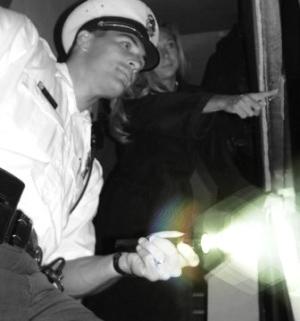

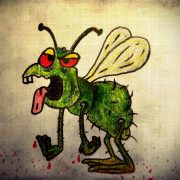
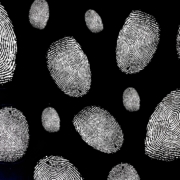
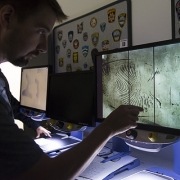
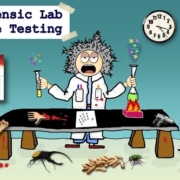
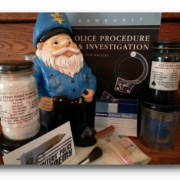


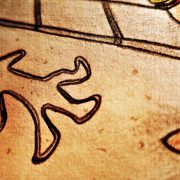



Good info. Thank you!
Thank you so much for another resource (in addition to your book, Police Procedure & Investigation: A Guide for Writers (Howdunit)
Thanks for providing this info.
Thanks for the wealth of info here!